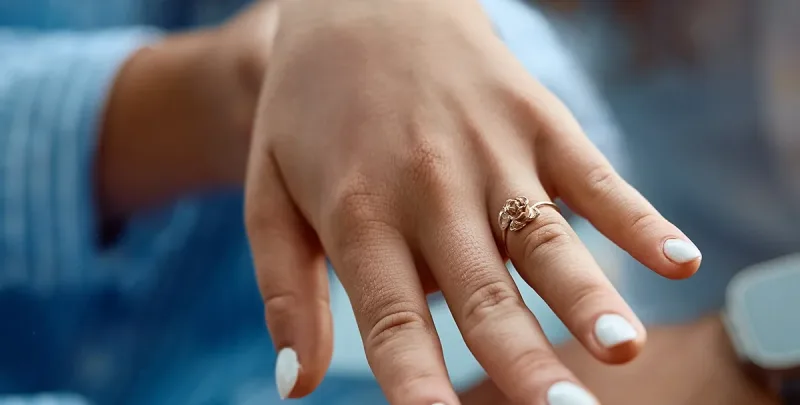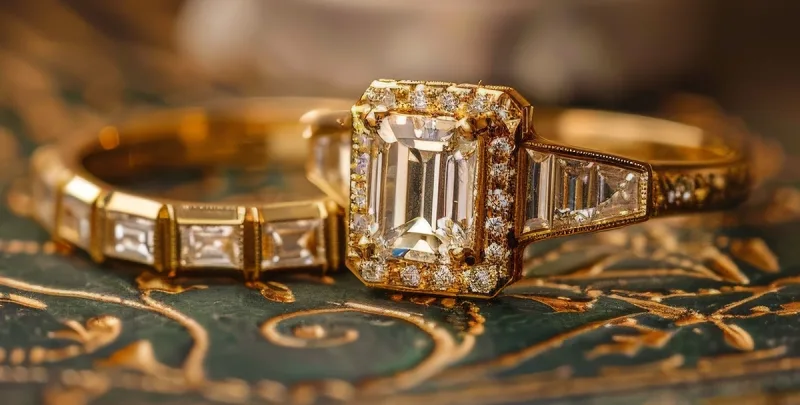Choosing an Engagement Ring
This is one thing in life you want to get right and when making the trek down to the jewellers, or searching online you will want to have a little insight in to the basic things you should be mindful of, before parting with you hard earned cash.
Engagement rings are traditionally made of gold or platinum and set with diamonds or other gemstones, diamonds are without doubt the most popular stone and good luck if you want to purchase anything other than this.
The main cost of the ring will relate to the type of stone used and there is a bewildering amount of parameters that can affect the price of the gemstone you choose. Click here for our guide to the types and styles of diamond)
Of course, the choice and the amount of money you are prepared to pay is up to you, your budget and your conscience. Whatever you decide, we at Assetsure can provide you with an engagement ring insurance policy so as soon as you leave the shop or your item arrives via the post, you will be fully covered. Here are our tips to make the process of choosing and buying an engagement ring a little easier.
1. What does she like?
It may prove a little difficult to carry out covert enquiries in to the style of ring your intended fiancé likes, but you may get an idea from the types of jewellery she already owns. The vast amount of engagement ring purchases, feature a single solitaire diamond, so perhaps by choosing one of these, you’re on pretty safe ground. If it’s a surprise be very careful who you ask for advice, this type of news is very difficult to keep quiet.
2.The type of band
most rings are made from gold, platinum or silver. Gold is the most popular and the purer the gold used, the more yellow the colour of the ring. Gold used in rings is an alloy of several metals particularly copper, the more copper that is alloyed with gold, the redder the ring will be. The more silver or other metals that are used, the whiter the ring will be. Although most people prefer gold, it’s worth bearing in mind that the ring colour will affect the colour of the diamond that is mounted on it, hence having a “white gold” or platinum ring or at least a setting made of these, may help to show off the natural beauty of the stone
3. The setting
This is the fitting that actually holds the diamond in place and is attached to the band. Often a platinum setting is chosen as it can help to reduce any colouration of the diamond from the setting and ring itself. The traditional setting of an engagement ring is called a claw setting (or prolongs setting).The size, shape and number of claws can vary and all will produce a different look. If the ring is going to be worn by a more active person, then generally, the more claws, the more secure the diamond will be. On a side note, it’s important to have the ring returned to a jeweller every year or so, to have the settings checked as diamonds are often lost by them wearing loose. A number of jewellery insurance policies even have a settings warranty which places a requirement on policyholders’ to have these checks carried out.
4. The Diamond
Choosing the diamond itself is probably the most difficult part of the whole process and unless you are aware of the four Cs (cut, colour, clarity and carat) it’s difficult to compare prices. Many websites now have useful calculators so you can choose and adjust your requirements, but when comparing prices, it’s important that you are doing so on a like for like basis.
Cut - Refers to the way that the diamond has been cut and shaped and this determines the beauty of the item. The tiny facets of a diamond help to reflect light from inside, the better the cut, the more brilliant the sparkle. When it comes to diamonds, the quality of the cut is often more important than the size of the item.
Carat - Refers to the weight of the stone itself. There are one hundred points in a carat (200 milligrams), thus a 50 point diamond is half a carat in weight. It’s important to remember that this is a measurement of weight, not size as some diamonds weigh heavier than others. Remember also that size isn’t everything a large carat diamond that is lacking in other areas may not be such a good choice. Colour - The colour of a diamond may be affected by chemical impurities and structural defects, “perfect” diamonds are rare and very expensive. A grading scale exists ranging from D-Z between which there are subtle changes in colour. The whiter (clearer) the diamond the more expensive it will be. That said, diamonds with extremely strong colours such as blue or red are very expensive indeed.
Clarity - Each diamond is unique and if you view it with a specialist jeweller’s loupe you may see tiny “inclusions” which resemble clouds. The fewer inclusions, the more expensive the diamond will be. These inclusions are invisible to the naked eye but can affect the “fire” of a diamond.
5. Sticking to your budget
Decide, the maximum of money you want to spend, all of the above factors will affect the price of the diamond so try to strike a balance between all of them. Ignore all nonsense about spending two months’ salary, this is nothing more than marketing, spend what you feel comfortable with ( or wish to pay back) and make sure you have shopped around adequately and are receiving a good deal for your money.
A high street jeweller is still the preferred choice for most people as you can view the item before you purchase which is important unless of course, you know exactly what you are looking for an for. You’ll undoubtedly get a better deal online as web site jewellery sellers don’t have the same overheads as retail outlets and if you feel really brave and have done your research properly, try visiting a diamond merchant where you can save considerable amounts of money by purchasing a stone and having it mounted in a ring. London’s Hatton Garden is world famous as a centre for diamond sales and although most merchants only deal directly with the trade you should be able to locate one that will sell you a single stone, although don’t expect too much assistance when it comes to choosing, remember, these are wholesalers in the main, not retailers.
As we mentioned earlier, insuring your engagement ring as you leave the jewellers is extremely important. We at Assetsure can provide you with an engagement ring policy online to make the entire process easy and simple. If you're not quite after engagement ring insurance, we also provide standard ring insurance and diamond ring insurance.


























